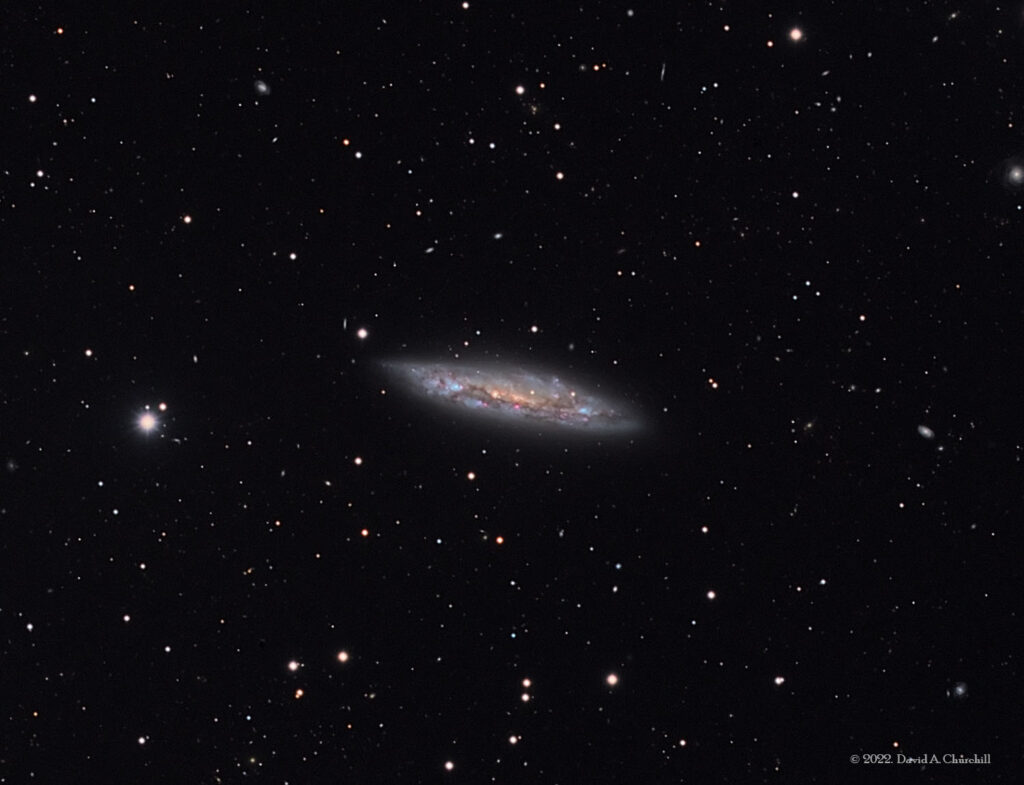Messier 108
Barred-Spiral Galaxy, Ursa Major
- Description
- Technical
- Links
Messier 108 (also known as NGC 3556) is a barred spiral galaxy in the northern constellation Ursa Major. It was discovered by Pierre Méchain in 1781 or 1782. From any perspective from the Milky Way, this galaxy is seen almost edge-on. This galaxy is an isolated member of the Ursa Major Cluster of galaxies in the local supercluster. It has a morphological classification of type SBbc in the de Vaucouleurs system, which means it is a barred spiral galaxy with somewhat loosely wound arms. The maximum angular size of the galaxy in the optical band is 11′.1 × 4′.6, and it is inclined 75° to the line of sight. This galaxy has an estimated mass of 125 billion solar masses (M☉) and bears about 290 ± 80 globular clusters. Examination of the distribution of neutral hydrogen in this galaxy shows discrete shells of expanding gas extending for several kiloparsecs, known as H1 supershells. These may be driven by currents of dark matter, dust and gas contributing to large star formation, having caused supernovae explosions. Alternatively they may result from an infall from the intergalactic medium or arise from radio jets. Observations with the Chandra X-ray Observatory have identified 83 X-ray sources, including a source at the nucleus. The brightest of these is consistent with an intermediate-mass black hole accreting matter. The galaxy is also emitting a diffuse soft X-ray radiation within 10 kpc of the optical galaxy. The spectrum of the source at the core is consistent with an active galactic nucleus, but an examination with the Spitzer Space Telescope shows no indication of activity. The supermassive black hole at the core has an estimated mass of 24 million solar masses (M☉).
Telescope: Astro Physics 175EDF f8.3
Mount: Astro Physics 3600GTO “El Capitan”
Camera: SBIG STT8300
Guider: Mini Borg 50 / SBIG STi
L: 52×10 mins = 520 mins, R: 24×10 mins = 240 mins, G: 24×10 mins = 240 mins, B: 24×10 mins = 240 mins
Total Imaging Time: 20h 40m
Data Imaged remotely over 5 nights during January 2022.
Data acquisition & Processing by David Churchill.
None

